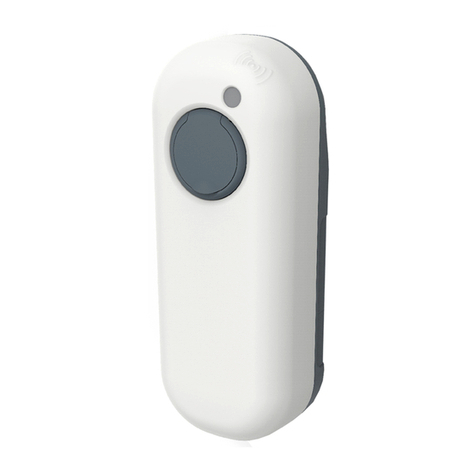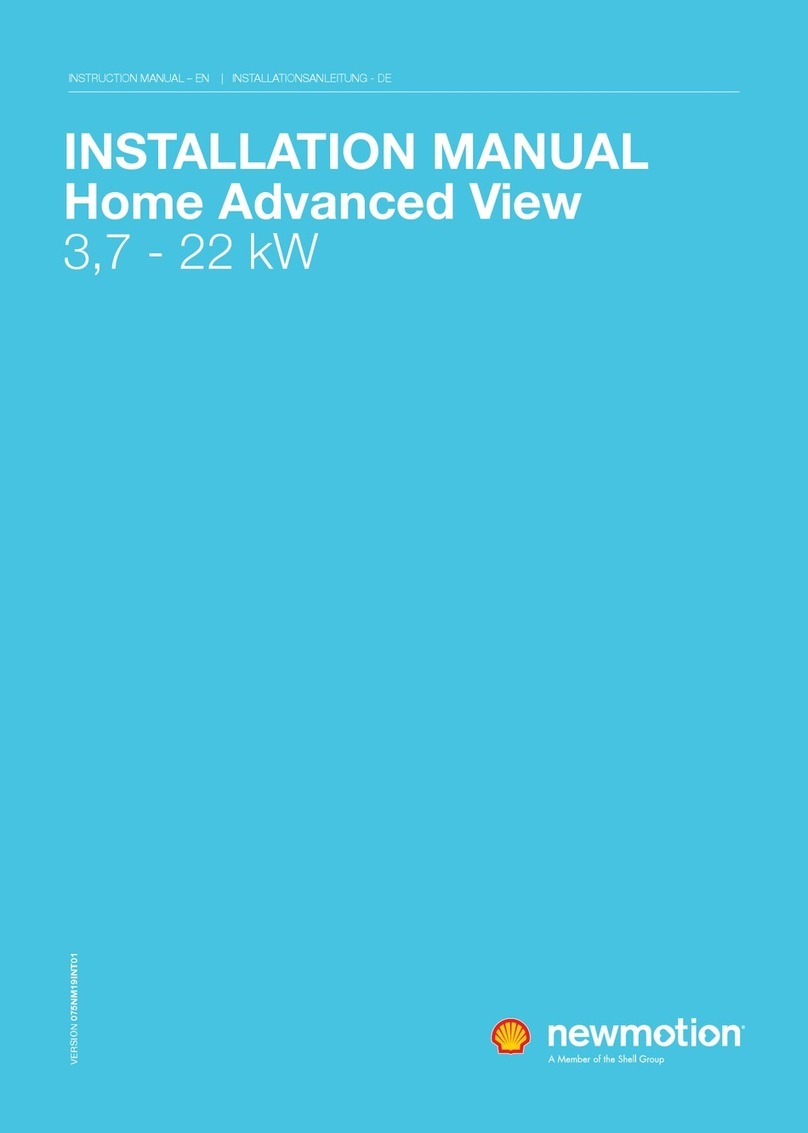
PLEASE CHECK THE PACKAGE
CONTENTS ON RECEIPT
Package contents
Charge point
Wall bracket
Rubber grommets (various sizes)
1 x M4 x 20 mm bolt (Torx)
6 x M4 x 12 mm bolts (Torx)
4 x M8 x 12 mm bolts (Torx) and washers
4 x M8 x 35 mm bolts (DIN 912) and washers
2 x plastic spacers
Sticker sheet for the sides of the charge point
GPRS signal (dBm) reception
The Vodafone GPRS signal strength (2G) must be
between -56 and -80 dBm (turn o 3G or 4G reception
on your mobile phone if you use it to check the signal). At
weaker signal, please contact NewMotion.
Space in distribution box
There needs to be sucient room in the distribution board
to add any necessary circuit(s).
SAFETY
The electrical system must be voltage-free during the
entire installation procedure.
The installation procedure must be carried out by a
trained electrician who works in accordance with the
relevant laws and regulations.
Do not carry out installation work in rain or when the
humidity is above 95%.
REQUIRED MATERIALS
AND TOOLS
General
Charge point
Rubber grommets (provided)
1 x M4 x 20 mm bolt (Torx) (provided)
6 x M4 x 12 mm bolts (Torx) (provided)
Power cable (see ‘Installation specications’)
Cross-head screwdriver (Pozidriv size 1)
Torx screwdrivers (T20 and T45)
Voltage tester
Spirit level
Tape measure
Dynamic Load Balancing
The charge points need to be connected via a UTP
cable to enable the mutual communication required for
Dynamic Load Balancing. The network conguration can
be done via daisy chain or star conguration using a
switch (not provided).
UTP cable (CAT5 or CAT6)
RJ45 connectors
Crimping tool (RJ45)
To attach the charge point to the wall bracket
Wall bracket (provided)
2 x M8 x 12 mm bolts (Torx) and washers (provided)
3 x screws, at least 6.3 x 60/70 mm with washers and
plugs
Drill and bit
To attach the charge point to the pole in soil
Pole and concrete base
4 x M8 x 12 mm bolts (Torx) and washers (provided)
4 x M8 x 35 mm bolts (DIN 912) and washers (provided)
DIN screwdriver (912)
Shovel
To attach the charge point to a pole in concrete
Pole
4 x M8 x 12 mm bolts (Torx) and washers (provided)
4 x wedge bolts and 4 x M8 nuts
Drill and bit
EN NL DE FR
INSTALLATION INSTRUCTION – P1
SMART, SAFE & FAST CHARGING




























